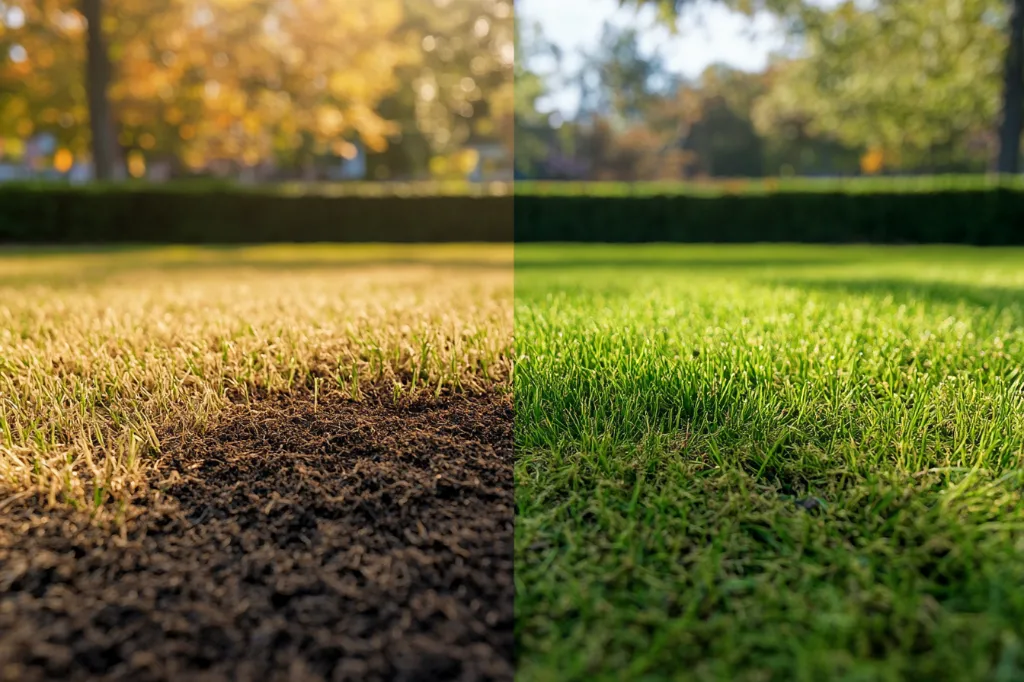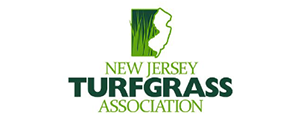As temperatures rise, lawns can face fungal issues and other ailments.
Common spring lawn diseases include snow mold, dollar spot, and brown patch. Early detection and timely treatment are key to preserving your lawn’s health and appearance.Snow Mold
Snow mold is one of the most recognizable snow mold lawn issues. It develops when prolonged snow cover and damp conditions allow a fungus to grow on the lawn surface.
Identification
Look for circular or irregular patches of discolored, dead grass. These areas may appear grayish or tan after the snow melts.
Treatment
- Rake Affected Areas: Remove dead grass to improve air circulation.
- Improve Drainage: Reduce moisture accumulation by aerating and overseeding when needed.
- Fungicide Application: In severe cases, consider a fungicide treatment following product guidelines.
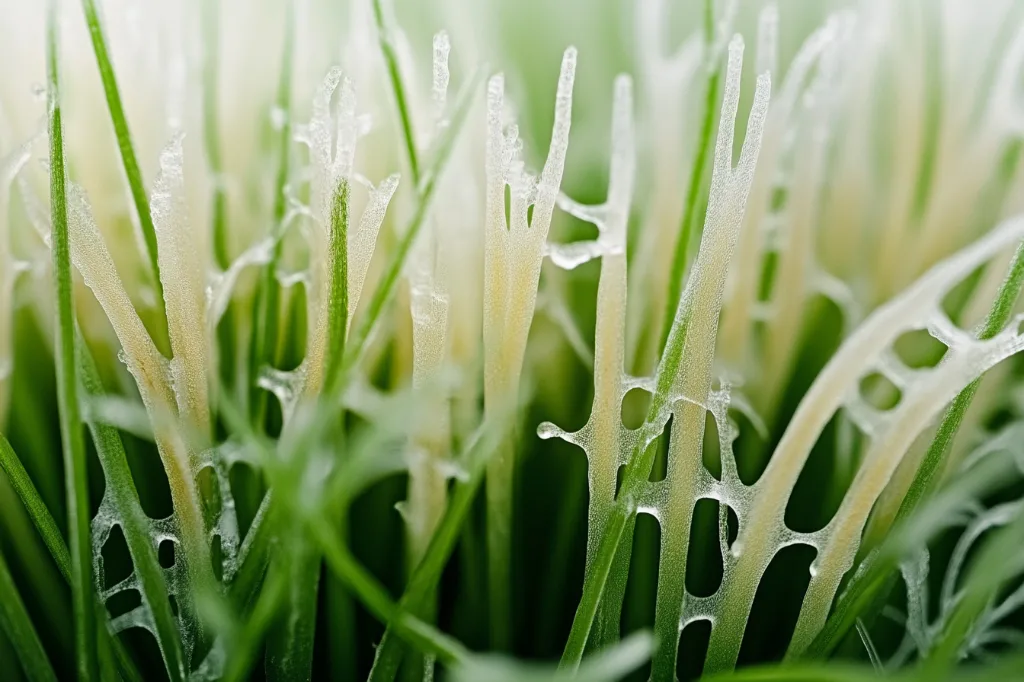
Other Spring Diseases
Beyond snow mold, several other issues can affect your lawn in spring:
Dollar Spot
- Symptoms: Small, circular spots of bleached or straw-colored grass.
- Management: Adjust watering practices and consider light fungicide applications if the problem persists.
Brown Patch
- Symptoms: Large, irregular patches of brown or dead grass, often near shaded or poorly ventilated areas.
- Management: Enhance air circulation by pruning nearby shrubs and adjust fertilizer use to avoid excess nitrogen.

Prevention Tips
Preventing lawn fungus and other spring diseases begins with good cultural practices:
- Proper Watering: Water early in the morning to reduce evaporation and allow grass to dry during the day.
- Regular Mowing: Maintain an optimal mowing height to promote healthy, thick growth that resists disease.
- Adequate Aeration: Aerate your lawn to improve drainage and reduce compaction, which minimizes disease conditions.
- Balanced Fertilization: Follow soil test recommendations to avoid excessive nitrogen that can encourage fungal growth.
- Clean-Up: Remove debris and clippings that can harbor disease pathogens.
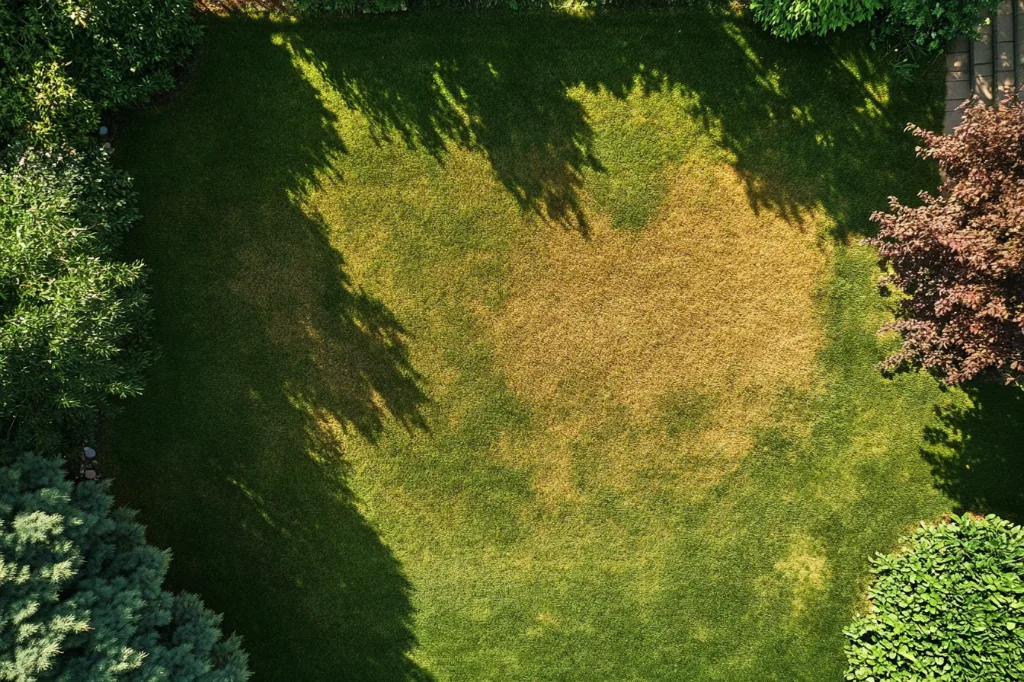
Treatment Options
If disease strikes, prompt action is essential. Consider these lawn disease treatment steps:
- Cultural Adjustments: Modify watering and mowing practices to reduce moisture and stress.
- Mechanical Removal: Rake or dethatch to remove diseased material and improve air circulation.
- Chemical Treatments: Use fungicides as a last resort. Always follow the product’s instructions and safety guidelines.
- Monitor and Maintain: Keep a close eye on your lawn for early signs of disease. Early treatment often prevents further spread.
Post-Seeding Care
Proper care after seeding is crucial for successful germination and growth. Consider the following steps:
- Watering: Keep the soil consistently moist by watering lightly 1-2 times per day until the seed germinates. Then, gradually reduce the frequency while increasing the depth of watering.
- Fertilizing: Apply a starter fertilizer to boost early growth. Follow recommendations based on your soil test.
- Mowing: Wait until the new grass reaches an appropriate height before mowing. Use a sharp mower to avoid damaging the tender shoots.
These care tips support successful overseeding lawn practices and help your new grass establish quickly.
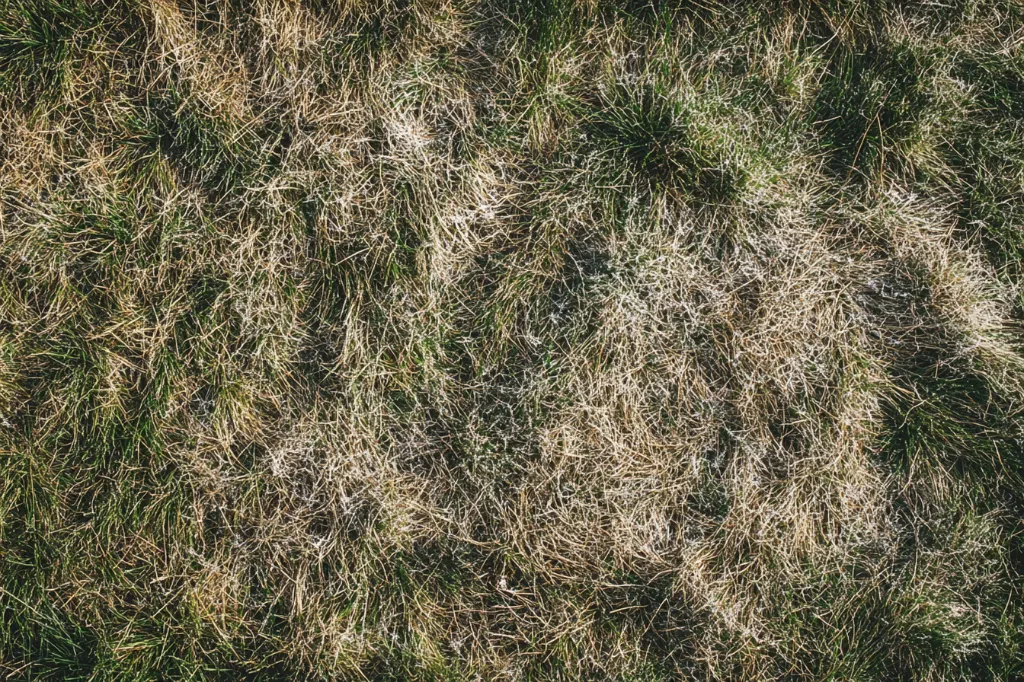
Early detection and treatment are crucial in managing spring lawn diseases.
By maintaining proper watering, mowing, and aeration practices, and acting quickly at the first signs of trouble, you can minimize the impact of lawn diseases. Keeping your lawn healthy today helps it thrive throughout the season.
For more guidance on seasonal lawn care, see our Spring Lawn Care Steps for a Lush, Green Lawn.
